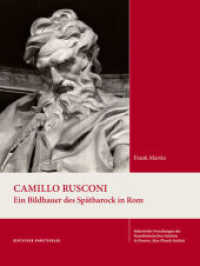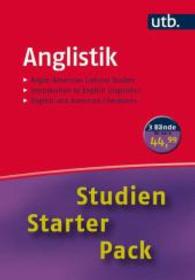基本説明
New in softcover. Hardcover was published in 2006. Explores a new politics for interrupting educational inequalities, demonstrating the inseparability of categories such as gender, sexuality, race, ethnicity, class, ability, disability, special needs.
Full Description
Looking across national contexts and drawing on ethnographic studies of schools in the UK and Australia, the book explores the implications of the contemporary education policy context and processes and practices inside schools for students as learners and for educational inequalities.
The book uses tools offered by post-structural theory to read ethnographic data and show how the discourses that circulate inside schools at once mobilise and elide gender, sexuality, social class, ability, disability, race, ethnicity, religious and cultural belongings at the same time as they open up and close down 'who' students can be as learners.
In demonstrating these processes the book offers new insights into how these 'truths' about students and learners are created and how they come to be bound so tightly to the educational inclusions, privileges and successes that some students enjoy and the exclusions, disadvantages and 'failures' that other students face.
Contents
Subjectivity and Exclusion.- Who's in and who's out? Inclusion and exclusion, globalised education policy, and inequality.- Rendering subjects: Theorising the production of the Self.- Researching Subjects.- Researching subjectivity and educational exclusions.- Names and practices: making subjects in/of school.- Educational Exclusions: Bad Students, and Impossible Learners.- Excluded White-working-class-hetero-adult-masculinity.- Excluded White-working-class-hetero-(un)femininity.- Excluded Black femininity.- Excluded 'specialness' (White-working class-hetero-(hyper-masculinity).- Navigating Educational Inclusions and Exclusions.- Included and excluded? Middle class-White-queer-high ability-alternative youth-culture/Working class-White-Black-hetero-low ability-mainstream youth-culture.- Included learners, impossible girls: The incommensurability of Indian-ness and desirable femininity.- Included students, impossible boys: The 'racing' and 'specialing' of (un-)masculinity.- Intelligible impossibility: The (un-)feminine subject-hood of a 'geeza-girl'.- Good students, acceptable learners, intelligible girls: Class, race, gender, sexuality and the adornment of feminine bodies.- Between good and bad student, between acceptable and unacceptable learner.- Interrupting Exclusions.- Practicing performative politics for inclusive education.








